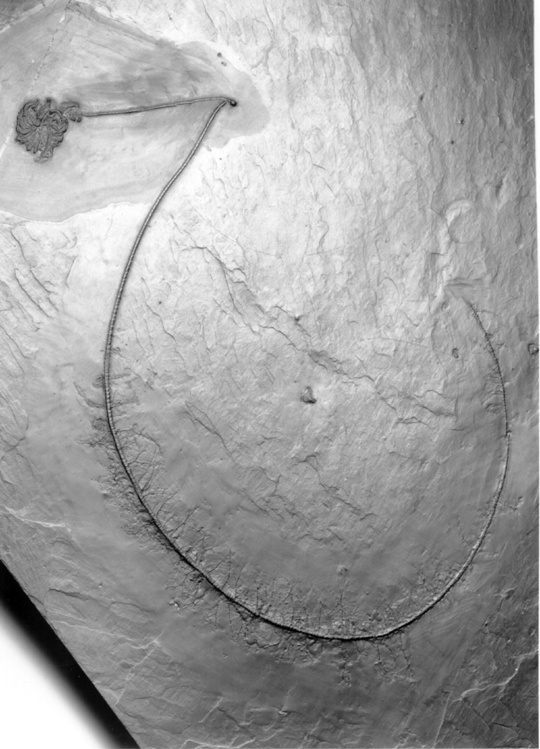Bei der hier gezeigten Taxocrinus sp. handelt es sich um eine der größten Seelilien, die je aus dem Dachschiefer geborgen werden konnte. Der Stiel hat eine Gesamtlängevon 92 cm. Er lag wohl zu 3/5 auf bzw. knapp unter der Oberfläche des Meeresbodens. Verzweigte, wurzelartige Anhänge dienten der Verankerung und verhinderten gleichzeitig ein Einsinken im Schlamm. Das scharfe Abknicken spricht für plötzliche Verschüttung des Tieres an seinem Siedlungsplatz.
en

